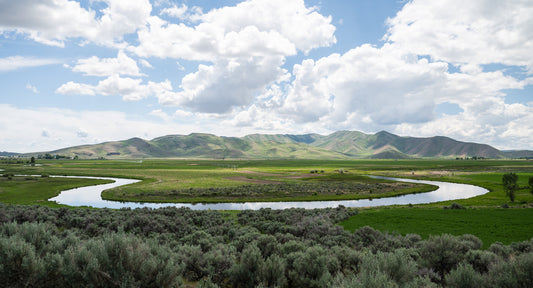As anglers, we are incredibly fortunate to belong to a community brought together by a love of pristine habitats and wild species. Behind every guided fishing trip lies the hand of a seasoned professional who serves as the steward of those places. These guides are not just experts in their field; they are the gatekeepers of a world of experience and adventure. They possess a deep understanding of the intricacies of nature and seem uniquely attuned to the subtle nuances that govern some of the wildest corners of planet Earth.
As the sport of fly fishing continues to grow, so does the number of professional guides hitting the water with guests. With interest in the profession surging, we're taking the opportunity to reflect on the path paved by those who have committed their lives to this work. Pat Dorsey, Landon Mayer, and Kate Crump represent not only the pinnacle of expertise in the field but also embody the virtues of professionalism, preparation, and dedication to their craft that all guides aspire to achieve. With over 75 years of combined experience, they serve as inspiration for anglers and guides alike. What goes into preparing for a guide season? How do guides manage guests with different skill levels? How do they set their businesses apart? Join us for a rare chance to go behind the scenes, beyond what you see on social media and in film tours, as we delve into the wisdom they’ve acquired over a career spent on the water.
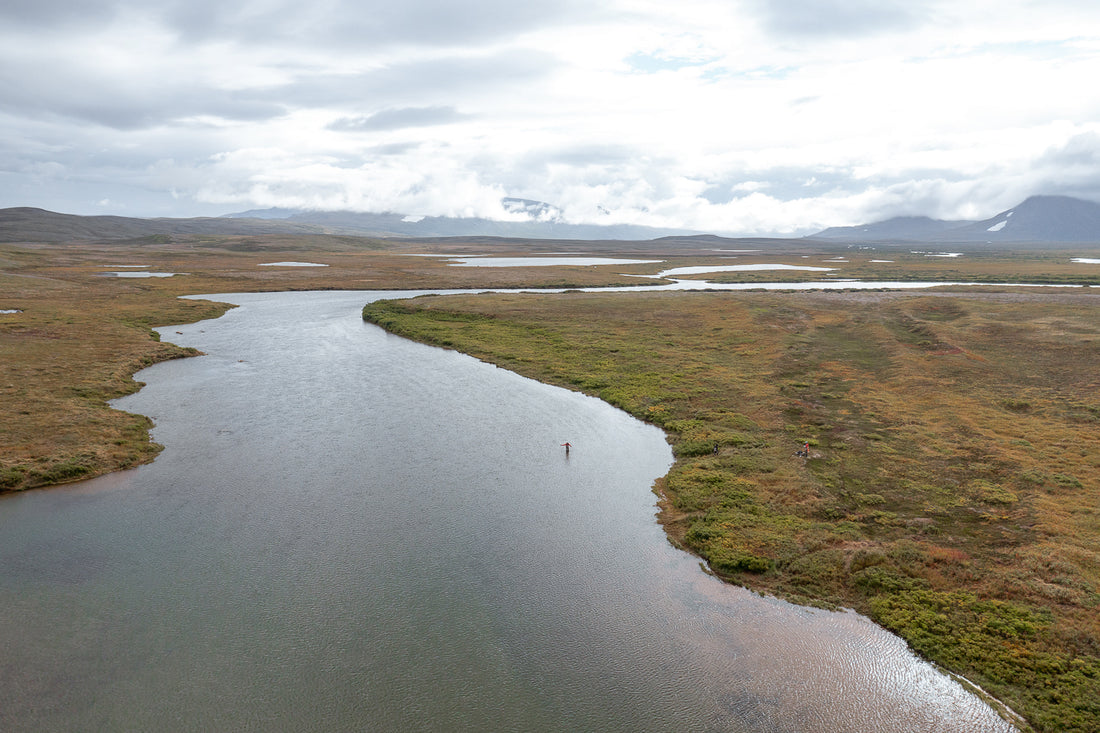
How did you get your start as a guide? Who gave you your first chance, and do you have any stories that have stuck with you from cutting your teeth on the water?
Pat Dorsey: My childhood dream was to become a fishing guide and fly shop owner. Jack Dennis was my mentor, and I wanted to grow up to be like “Jack”. I was hopeful to one day become a professional guide, work in, or own a fly shop, write books, and travel the country sharing my passion for the sport. I started guiding at the Blue Quill Angler in the fall of 1992. I went into the Blue Quill Angler looking for a guide position a few weeks earlier and visited with Jim Cannon, who was the general manager and a partner in the business. “Meet me at the Gill Trail Head and let's fish Cheesman Canyon together,” Cannon said. The rest is history… Jim Cannon must have noticed something with my angling abilities and people skills that inspired him to offer me a job. I gladly accepted the job and was super proud to be part of a phenomenal guide rotation. It was an all-star lineup. Kevin Gregory, Monroe Coleman, and Randy Smith were ahead of me in the guide rotation. I was the last man in the rotation and got only a few guide trips my first year. That didn’t discourage me… I kept working hard and built up a nice guidebook of return guests. After five years of guiding, I was able to stay extremely busy with return guests and referrals.
Funny you bring up any funny or strange stories about cutting my teeth as a professional guide… My very first guide trip was a “no-show”… the guest never showed up at the shop to go fishing. Jim Cannon still laughs about it today. It was a bumpy start…but I just started my 32nd year as a professional guide in 2024. It’s been an incredible career, and I have enjoyed every minute of it…
Landon Mayer: I started guiding in 1997 with a company called Colorado Fishing Adventures. In the years to follow, I began running trips for the Peak Fly Shop. One of my earliest memories and stories I love to share is when I first approached one of my mentors, Ed Engle, for advice on my first guide day. He said, "No problem!" He looked straight at me and said, "If you like to fish, don’t guide," and then burst out in laughter. I knew immediately I would get along with Ed and his sense of humor. "This is going to be a fun place to work," I thought. It was where I cut my teeth as a guide.
Kate Crump: I first started guiding in 2008, in Southcentral Alaska, working for Nanci Morriss-Lyon. She was not only the first female sportfishing guide in Alaska but also the first in Bristol Bay—by all measures, a very successful woman in her field. At that time, fishing lodges in Alaska weren’t hiring women, but I got lucky. A friend of mine, Dan, worked for Nanci. After I expressed my interest in guiding in Alaska, Dan offered to reach out to her. Fortunately, she gave me a chance based on his recommendation. I had admired Nanci for years for being a trailblazer for women in a tough, male-dominated profession, especially in the challenging conditions of Alaska, from swinging flies for big fish to gear fishing for salmon.
I quickly realized that there were no other female guides in the area, not because they weren't capable, but because lodges weren't hiring them. Despite wanting to be recognized simply as an angler rather than by my gender, I couldn't ignore the fact that I was an anomaly in the field. This visibility meant I frequently encountered questions about my career choice and felt pressure to excel, not just for myself but as a representative for all women in the industry. This was a lot to carry, but my personality pushed me to want to prove myself equal, if not superior, to my male counterparts.
One memorable incident occurred when I was supposed to be dropped off at a pond but ended up at the mouth of a river due to fog, without a clear path to follow. The journey through the bush was chaotic, and we arrived at our destination with sticks and leaves protruding from our packs and clothing, only to be greeted by a fellow guide with two anglers. Despite the embarrassment, I quickly realized the experience was a testament to the unpredictable and challenging nature of guiding in Alaska.
Guiding is very much about adapting and learning to control the uncontrollable, which is fascinating and challenging in equal measure. My career has been based on finding ways to exert as much control over these unpredictable elements as I can, always working to ensure success in the wild and unpredictable environments we operate.
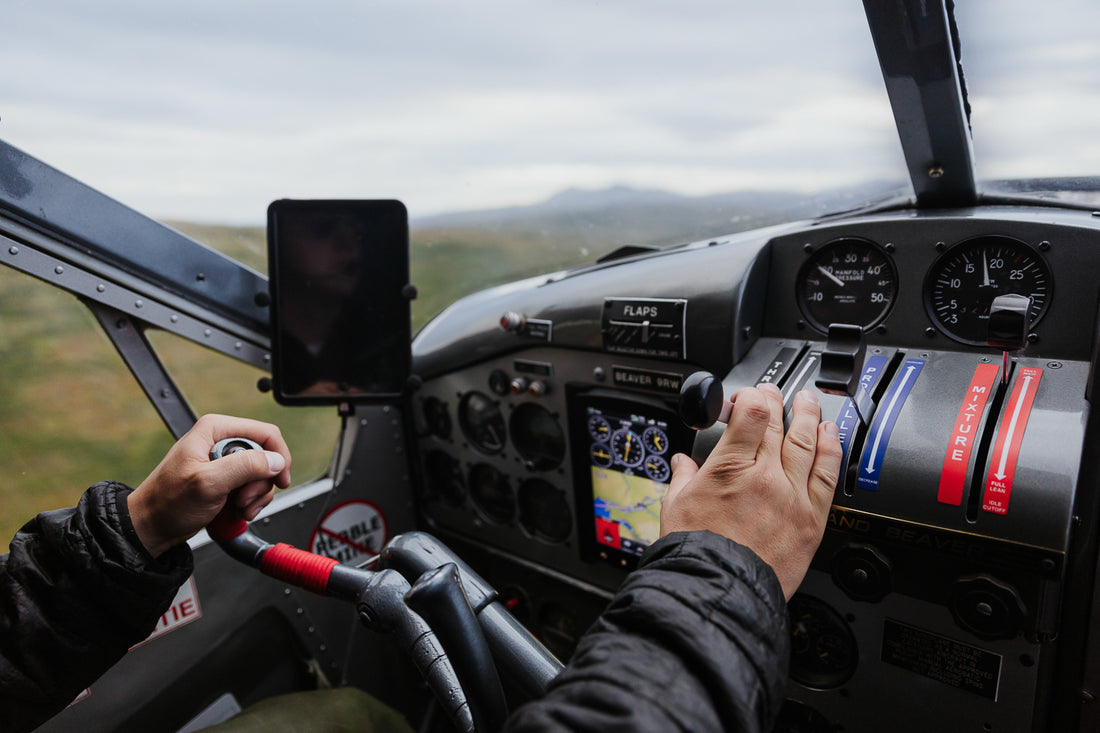
Pre-Season Preparation
As spring arrives, and the guide season begins in earnest, meticulous preparation becomes the name of the game. Guides who put in the work ahead of time reap the rewards of full fly boxes, organized gear, and preparedness for long days on the water. These aren’t just checklists. They’re a roadmap to providing guests with an unparalleled experience.
As we ramp up into the busiest time of the year for guides, what do you do to prepare? Do you have any pre-season rituals or routines you’ve developed over the years?
Pat: Preparation is key for guiding. In the old days, there was a slow season (off-season), but now my schedule is extremely busy. The show season keeps me running hard, and I guide in between events and travel. I am always tying flies to be prepared for upcoming guide trips. It’s simply impossible to have too many flies, so I keep on tying them. It keeps me connected to the sport when I’m not fishing or guiding.
I also make sure I have plenty of leaders, tippet, weight, and all the gadgets necessary for a successful day on the water. I ensure my rods and reels are up to snuff, replace fly lines, and net bags, repair waders (leaks), stock up on terminal tackle, etc. I like to change out the net bags on my Fishpond nets before the season starts and replace them again mid-season. You only get one chance to make that first impression. I make sure I pull up with a clean truck. It's critical that your gear is in top-notch shape, and that you look the part as a professional guide.
I recommend getting to the shop (or river) 15 minutes early. If you are late, that sets the tone for a bad guide trip.
Landon: The first thing I prep for as the guide season approaches is my state of mind. I go through journal notes from prior years, getting ready for the trip the next day, the night before, getting on the schedule, the routine of early mornings and departure days on the river, and more. This year, that has included preparing for a lot of snow!
The second thing I do is square away all my gear; leaders, tippets, floatant, weights, etc. All the necessary gear for the day needs to be in its place and ready to go. Part of that process is making sure my Headgate Tippet Holder is restocked, and my Waterdance is organized. On the rivers I guide, high or low-water conditions dictate what other gear makes the cut on any given day.
Fly preparation starts at the vice the night before every trip. I tie at least a dozen flies for the next day's journey each night throughout the year. Guiding over 200 days and tying over 2000 flies a year is the best way to keep me mentally connected and focused on the job at hand.
Kate: I think it goes back to what I can control, which is my gear. I have a complete Alaska gear set that stays in Alaska; I don't shuttle it back and forth between our winters in Oregon and summers in Alaska. It's always ready to go. This prep is critical to me. Before I leave Alaska in the fall, I inventory everything and make a list of what I’ll need next year because it takes a long time to source gear and supplies. You can't just realize you need a new strap or net for tomorrow and not have it. Organization is key to my success. If I'm organized and prepared, I feel confident no matter the challenge.
Guiding in Alaska, as opposed to some other areas, involves an endless list of unknowns. Even if I've been visiting a river each season for 15-16 years, there might be an 8 to 10-month gap between visits. My guests' experience heavily depends on my preparation. In the wilderness of Alaska, there's rarely anyone around in the places we go. However, there's a kind of grapevine among those who do frequent the area, like recreational pilots, other lodges sending out flights, and the air taxi service. This network shares vital information about river conditions and the effect of recent weather events. Despite this, a lot of our success comes down to getting boots on the ground and observing for ourselves, relying on our skills and experience to adapt. Conditions rarely remain the same from one year to the next.
How important is gear prep? Are there items you check or replace annually?
Pat: I am particular about my gear. I like to have duplicates of everything in my truck in the event there is a failure of some sort. I carry an extra net, an additional pair of personal waders and boots, an extra rain jacket, etc. I also carry extra items for my guests such as polarized sunglasses, layers, hats, gloves, rain gear, rod and reel.
Landon: I prefer clean fly lines, a new leader for every guided day, and doubling up on tippet spools so I never run out. I have a backup for each scenario. Having rods and reels rigged up, and making sure I get in the habit of preparing the night before the next day keeps me focused and ready. Most importantly, this allows us to get on the water as soon as we arrive.
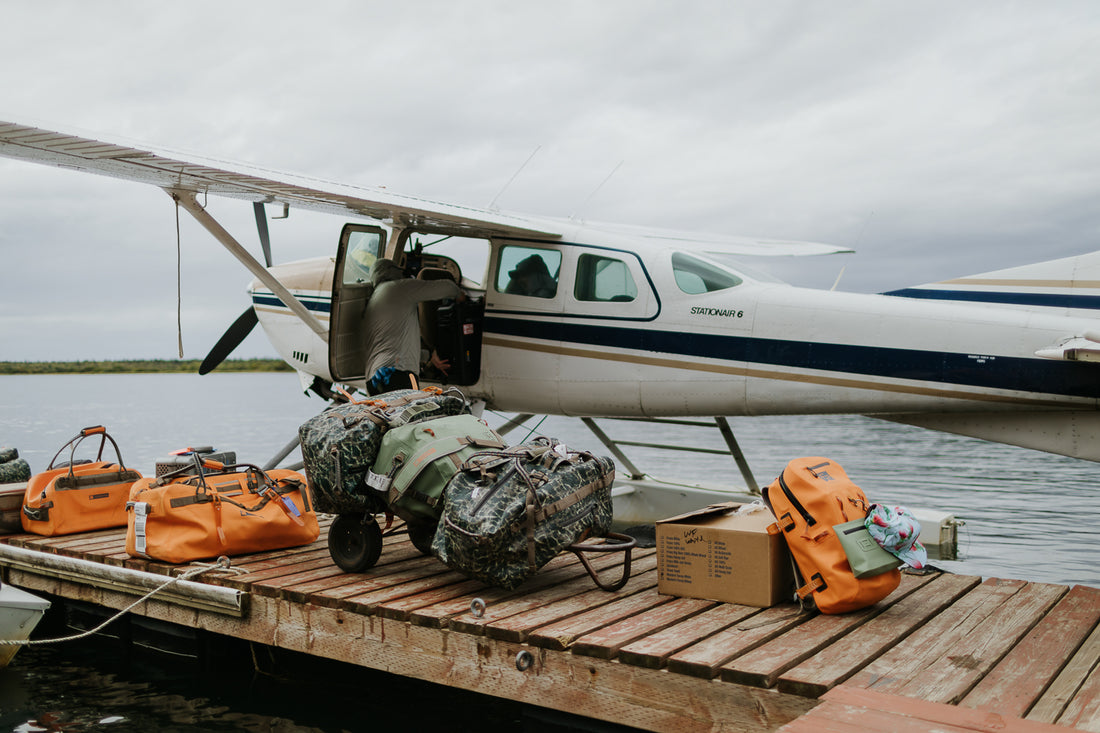
Gearing Up
From the rugged terrain of the South Platte River to the distant wilderness of Alaska, having reliable gear is essential to ensuring a successful day on the water. Effective gear is often the difference between a seamless outing and a frustrating walk in the woods. Whether it’s ensuring safety on the water, facilitating ease of operation, or enhancing the overall guest experience, investing in reliable equipment is crucial to running a successful operation.
What essential pieces of gear can you not go without during the guide season? What are some of the characteristics of great gear?
Pat: Durability is key, and I need to know my gear won’t let me down during the height of the guide season. If for some reason there is a failure, the staff at Fishpond keeps me on the water. I depend on gear that will take a beating in the rugged terrain, such as Cheesman Canyon, where I guide, so having a reliable source for gear that can hold up is critical.
I am a huge fan of the Waterdance Pro Guide Pack. I have used it for years, and it is one of the best pieces of gear that I own. I keep it stocked up with all the essentials that I need for a day on the water, I cannot imagine guiding without it. I have tried other packs over the years, but I always return to using the Waterdance! If I know I’ll be wading deeper than usual, or during the monsoon season, I make the switch to the Thunderhead Submersible Lumbar Pack. That is typically my go-to for destination travel, like Alaska and Argentina.
I also routinely use the Thunderhead Roll Top Duffel. It’s invaluable when I fish from a drift boat, inflatable raft, or Carolina Skiff. Finally, I cannot live without Fishpond Nomad Nets. Available in a wide variety of sizes and handle lengths, they are essential for guided days and destination travel alike. They are the best nets ever made… period…end of discussion.
Landon: I cannot go without a quality pair of polarized sunglasses and backups to ensure that sight fishing is part of my guest’s experience. In addition, fluorocarbon tippet is a must-have for strength and stealth. I make sure to have all my signature leeches loaded and ready because it’s ALWAYS leech season. Bringing extra clothing is also critical, ensuring I have backup layers in a duffel bag, backup rods, reels, and waterproof gear is essential.
Fishpond plays a massive part in my fishing and guiding activities. The Headgate Tippet Holder, Waterdance Pro Guide Pack, Thunderhead Submersible Backpack, Stowaway Reel Case, and Thunderhead Submersible Duffel Bags all make it possible to do my job. These are products I know will not fail and remain durable and resistant to everything travel and weather throws at them. Lastly, my Nomad Nets are always on hand. There’s nothing worse than showing up for a trip with a broken bag or a net that’s out of commission, and your guest hooks the fish of a lifetime. These nets and net bags are as durable as they come, and allow me to land the fish quickly and safely to ensure a proper release. I have complete faith in the “hog pen” models I use, like the El Jefe Grande Net, Boat Net, and the Wild Run Edition Mid-Length Boat Net.
Kate: Some of my favorite products are the ones I use to get to and from Alaska. I use a Dakota 45” Rod and Reel Case transport because it's perfectly sized for my spey rods and favorite switch rods. All of my clothing, personal items, waders, and boots, load up into my Grand Teton and Teton Luggage. Finally, I use Sandbar Travel Pouches to organize my safety gear and tools within my packs and bags, which helps immensely. Taking care with packing ensures everything arrives in Alaska without damage.
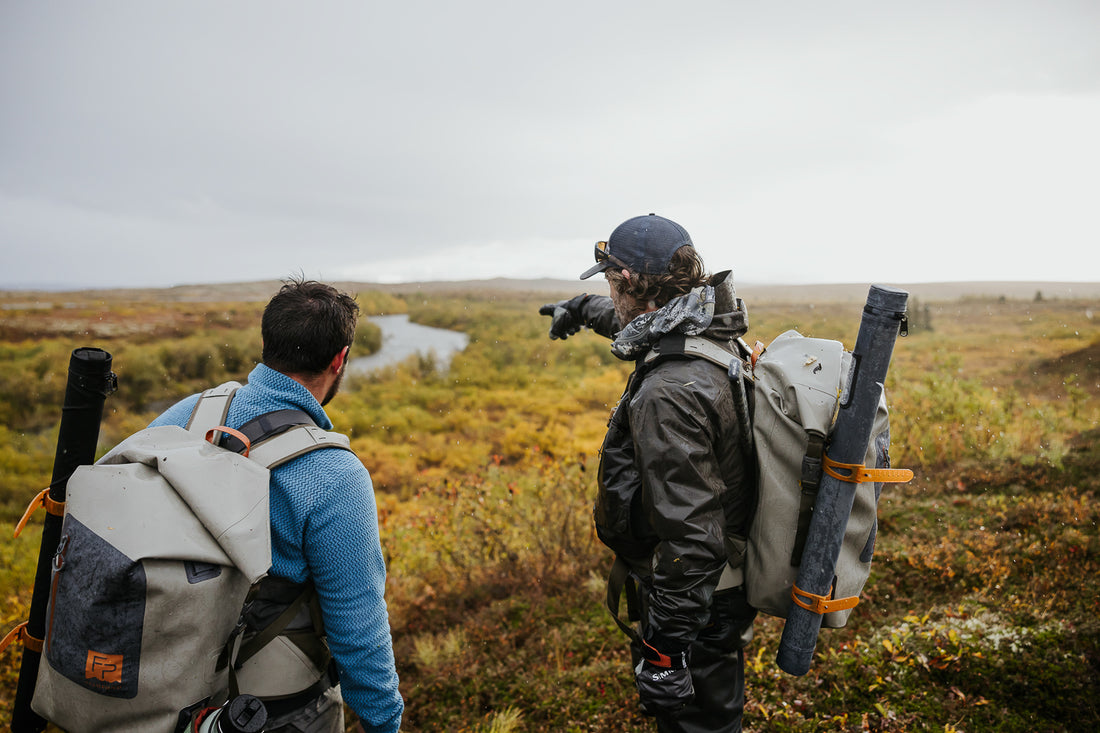
Interacting with Guests
Preparing for guests of various skill levels is crucial, and requires a customized and nuanced approach. Guest interaction and empathy are just as important as catching fish, so understanding goals and objectives beforehand is among the most important things a guide can put into practice. Ultimately, treating guests as participants, rather than customers underscores the importance of a holistic experience on the water.
How do you prepare for the varied skill levels of guests you guide? Are there specific ways you tailor the experience for beginners versus experienced anglers?
Pat: The most important part of a successful day on the water is understanding your guest’s goals and objectives before the day begins. Do they want to work on sight fishing, casting, mending, fly selection, entomology, and so on? The majority of my new guests want to learn to be better anglers rather than catching lots of fish. The important thing as a professional guide is that you must work hard. You must always give 120% effort because there are a lot of options (fly shops and guide services) to choose from. Hard work helps you separate yourself from the crowd. It’s important to give the same effort to the guest you guide on October 31st as you did with your guest on March 1st. You cannot fake passion. My passion bleeds through me when I am on the water. My guests know I still love my job after 32 years. I hear it all the time: “You really love your job. It’s very apparent that you still enjoy guiding after 30-plus years of doing it.” That is important. The last thing a guest wants is a burned-out guide who lacks passion.
Landon: I do tailor my trips for each guest. With a new angler, for example, I’ll be sure to cover all the information that an experienced angler may already be comfortable with, like as rigging rods on the move, casting techniques, and presentation techniques at a basic level. For experienced anglers, I look for customized pieces of information to share with them, even if it’s just one or two details that they can gain from the trip to help them be better on their next adventure. New anglers are often focused on successfully landing fish, and numbers are more important than size. An experienced angler, on the other hand, is often more concerned with catching larger trout rather than the numbers of smaller trout.
Kate: As a fishing guide, you have to continuously learn new things; otherwise, you'll lose empathy for how challenging it can be for people to do what you're asking them to do. It's essential to adapt your language and teaching style to ensure guests understand. You can't expect to turn someone into an expert angler in one day. One common mistake young guides make is trying to coach their guests all day long. This approach can make the experience unpleasant for everyone involved. Guests are here to enjoy themselves, so after explaining a technique a few times, you need to step back and let them practice. Your focus should then shift to getting them into fish with the skills they have.
One of the best decisions I made as an experienced guide was to learn how to surf. Over the past three years, I've gone on guided surf trips where I'm the guest, learning something entirely new. This experience has given me a lot of empathy for my guests. Even something as simple as fishing from a raft here in Oregon yesterday made me realize how challenging it can be. Constantly untangling lines, stepping on gear – it's tough, even for someone experienced like me. It reminded me of the struggles my guests face, and it's crucial to empathize with them. When you notice someone getting frustrated as you're explaining something, it's a signal to you that you need to change your approach.
What's one piece of advice you consistently give to your guests to enhance their experience on a guided trip with you? Is there a way you treat your guests that you think distinguishes your services?
Pat: You never quit learning! As you continue to fish, the biggest breakthroughs are subtle things, little nuances that separate you from other anglers. The old cliché that 90 percent of the fish are caught by 10 percent of the anglers is not far from the truth. The truth is that a large percentage of fish are caught by a small group of anglers. Knowledge leads to success. The more you know about the fish, the river, hatches, matching the hatch, etc., the better angler you eventually become. Toss luck out of the equation; it has nothing to do with successful fly fishing. It’s much simpler than that. A solid skill set and understanding of the river are the formula for success.
Landon: I try to keep my advice as simple as possible. The fish you land teach you something; the fish you lose teach you everything.
Kate: One piece of advice I find myself embodying more than explicitly stating to my guests is in how I perceive and treat them. I firmly believe that guides should not refer to the folks they take fishing as 'clients' but rather as 'guests.' This shift in terminology fundamentally alters the relationship dynamic. It's not just a transaction between a business and a customer; it's an invitation into your environment, sharing a profoundly special experience with them. Recognizing them as guests underscores your responsibility for their safety and enjoyment throughout the day. This perspective doesn't just improve how you interact with your guests; it also enhances how you engage with others on the river. Viewing everyone as a guest compels you to present the best version of yourself, to showcase the beauty and importance of this environment, hoping they, too, will come to cherish and protect it.
Reflecting on how I've evolved in this role, I recall initially providing too much instruction, overly focused on ensuring my guests caught fish. Over time, my approach has become more natural and relaxed. If I'm ever uncertain about whether someone is enjoying themselves or what they're looking to get out of the experience, I don't hesitate to simply ask them. This direct communication has made me a much better guide. It's about establishing a connection and ensuring that the experience is memorable and meaningful for them.
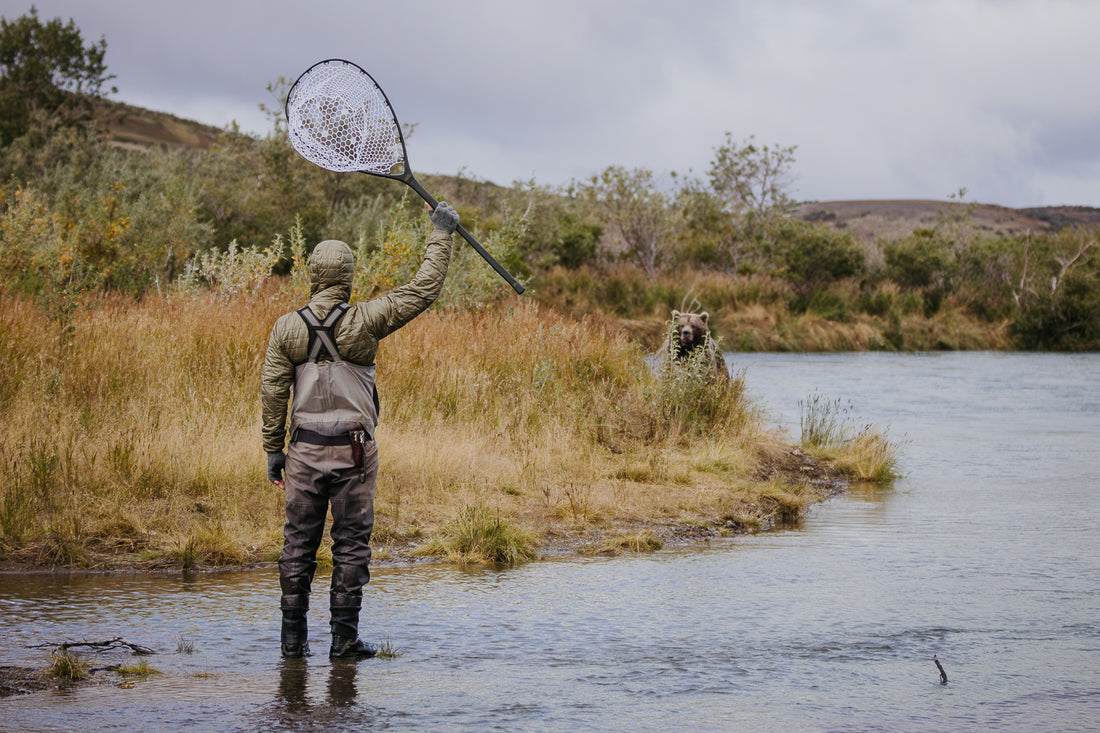
Guiding Through Experience
Learning most often comes from experience, and for that, there are no shortcuts. Mentorship on the water is a tremendous responsibility and one that top guides take very seriously. They are not simply exploring new ways to lead guests to fish, they see their role as promoting environmental stewardship and diversity among anglers. With passion and a commitment to excellence, they empower others to embark on their own journey of discovery.
Looking back on a career spent on the water, what is one lesson you’ve learned that has significantly impacted your approach to guiding?
Pat: I’ve been blessed with an amazing career. I have an office with an incredible view. I get to “fish” through my guests every day. When they catch fish, I catch a fish. When they struggle, I struggle, but I find ways to solve the puzzle. I have learned more by NOT catching fish in comparison to bringing one to hand. You never quit learning. If you do, you are doing something wrong.
Landon: I’ve learned over the years that it is more effective to teach concepts in groups of three, so that’s a good place to start. I try to focus on simple teaching techniques so that the guests experiencing adventures with us can go back to their home water or on their next fishing adventure and easily carry that knowledge with them. If you get too deep in the weeds with your teaching the sensory overload starts crossing wires.
Kate: Fishing is incredibly beneficial; it connects us to ourselves and to environments that are constantly threatened. One lesson I’ve learned is that I have a responsibility to foster diversity in our industry. By helping to increase participation from diverse backgrounds, we gain more allies in the fight to protect these precious places. Reflecting on my journey, being the only female guide in my early days to now, 15-16 years later, seeing about a dozen women guiding in Bristol Bay is progress, though it's still not enough. The representation of people of color is even lower and demands improvement. It’s essential to acknowledge the need for more inclusive opportunities in this sport. Diversity benefits us, whether in guiding or just fishing, enhancing the overall community. Considering the role I play in that has changed the way I think about myself as a guide.
What advice would you give to other professional guides on preparing for the guide season? Are there any emerging trends in the guided experience that you’re preparing for in the coming years?
Pat: Your job changes daily, and you must be prepared for a variety of situations. No two days are ever the same. Some days, the fishing is tough; other days, the crowds are a problem, etc. The most important part of guiding is to always be a pro! All guides are not created equal. By that, I mean some work harder than others, some have incredible people skills, and some always choose to have a positive attitude despite the conditions or challenges they face. But, at the end of the day, you’re the guide and have to take full responsibility for the outcome of your fishing trip. Don’t take the easy way out. Always work hard and provide constructive advice for your guests. Guided trips are a significant investment, so I want the day to be extra special. Never yell at a guest or get upset with them when they make mistakes or lose a fish. It’s only a fish—make sure they learn from their mishaps. The reason they hired you was to learn from you.
Another important part of being a good guide is being a steward of the environment and protecting the resource. Educate your guests on proper fish handling techniques, quick photo ops, releasing fish, streamside etiquette, pinching barbs, etc. Protecting our finned friends is extremely critical for the future of our sport.
Landon: Again, simplicity is key here. The best advice I can give to a new guide is that every trip and guest matters. The best way to grow a brand or improve the experience for your guests is through hard work and honesty. Reputation is the number one key to success in this industry.
Kate: Get involved! In keeping with my off-water approach, I'm deeply committed to encouraging women's participation in the sport and in guiding. My aim is to attract women who are interested in becoming fishing guides and to train them to join the next generation in the field. Additionally, there are many commendable organizations I would recommend volunteering your time with. For example, in Alaska, the Bristol Bay Fly Fishing & Guide Academy introduces local youth from Bristol Bay to sport fishing. For some, it’s their first experience fishing for fun rather than for subsistence. The program is inclusive, welcoming children from all backgrounds, and opening their eyes to the possibility of pursuing a career in this field. Some graduates have already become fishing guides! You get out what you put into the fly fishing community, so my advice would be to find a cause you believe in and get to work.
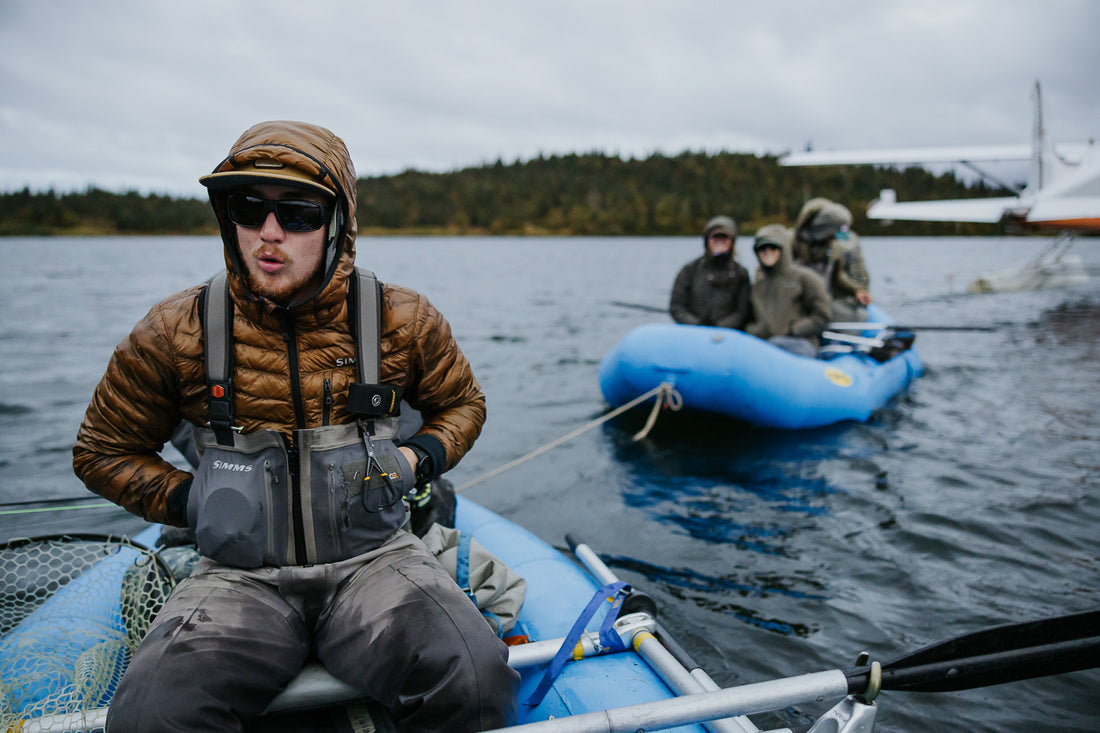
Meet your Guides:
As a native of Colorado, Pat Dorsey has been guiding guests of all abilities for over 30 years. Pat spends well over two hundred days a year on the water, a combination of guiding, hosting destination travel trips, and personal days. He is also the head guide and a co-owner of the Blue Quill Angler fly shop in Evergreen, Colorado, where he oversees and trains more than 25 guides, setting the standard for integrity and professionalism in the Blue Quill Angler guide operation.
Landon Mayer specializes in pursuing selective trout. With over two decades of guiding experience in Colorado and Alaska, Mayer shares his expertise through books, including "101 Trout Tips," and instructional videos like "Mastering the Short Game." He educates fellow anglers through guided trips, classes, and presentations, emphasizing innovative techniques for sighting and catching trout. Residing in Colorado with his family, he continues to make significant contributions to fly fishing both on and off the water.
Kate is a fishing guide, hunter, and owner of Frigate Travel and The Lodge at 58 North. Along with her partner Justin and their two yellow labs, Kate guides in the Pacific Northwest and Alaska’s Bristol Bay. Beyond guiding, Kate is an environmental activist involved with Rockaway Beach Citizens for Watershed Protection, advocating for reform in Oregon's private lands logging practices. Serving on the board of Pacific Rivers and a member of North Coast Citizens for Watershed Protection, she champions the health of critical watersheds. Kate's writing appears in esteemed publications like the Fly Fish Journal, Trout Magazine, and the Salmon Steelhead Journal.


